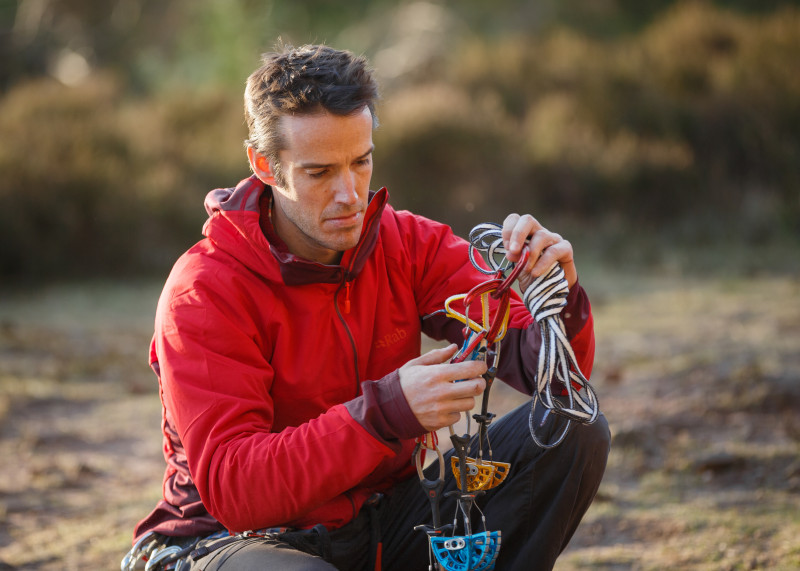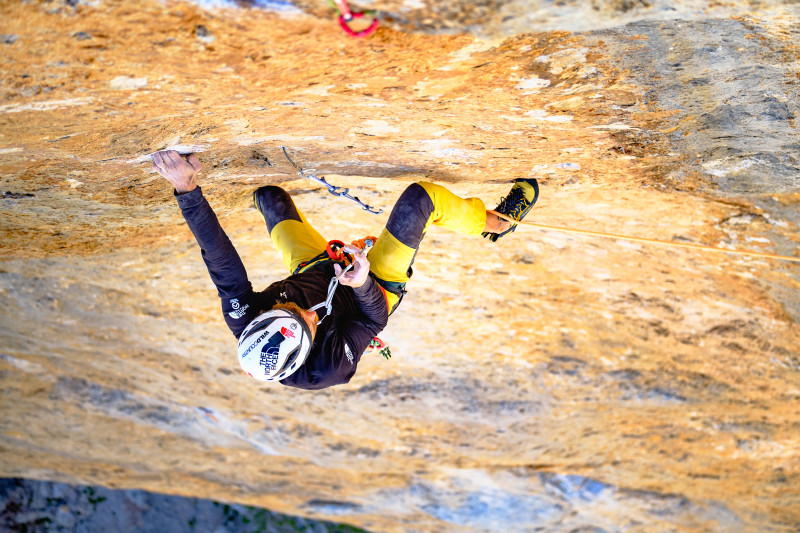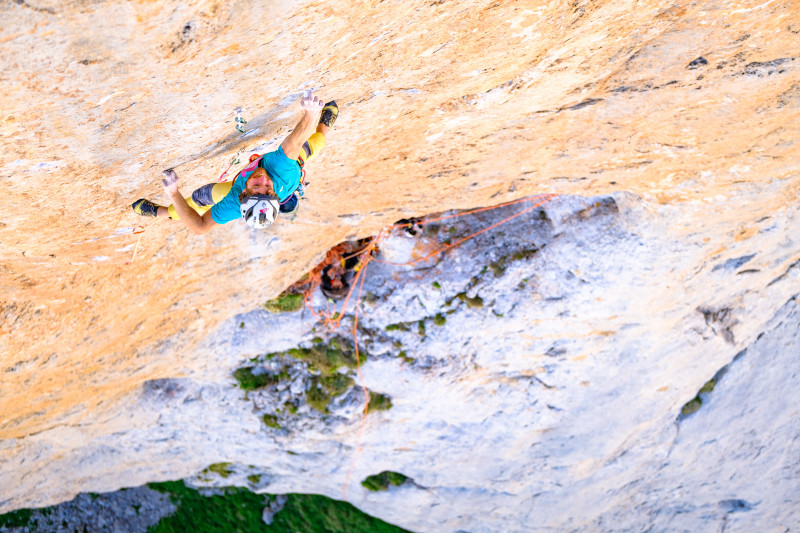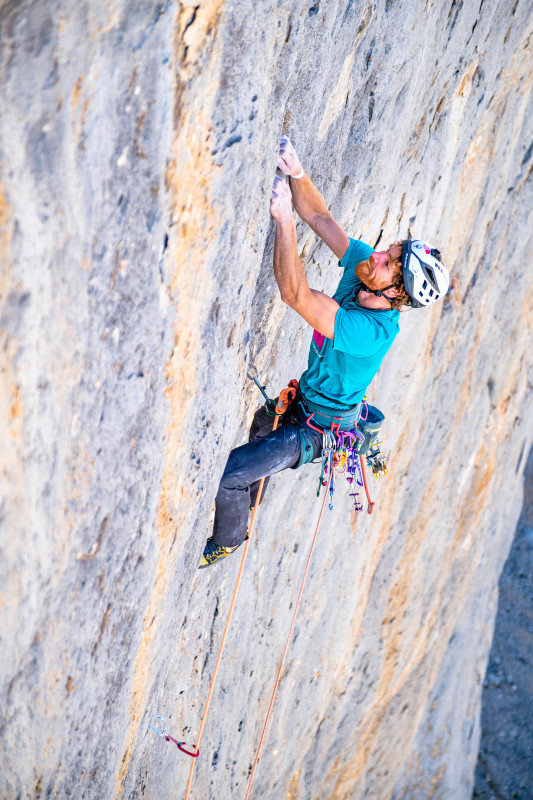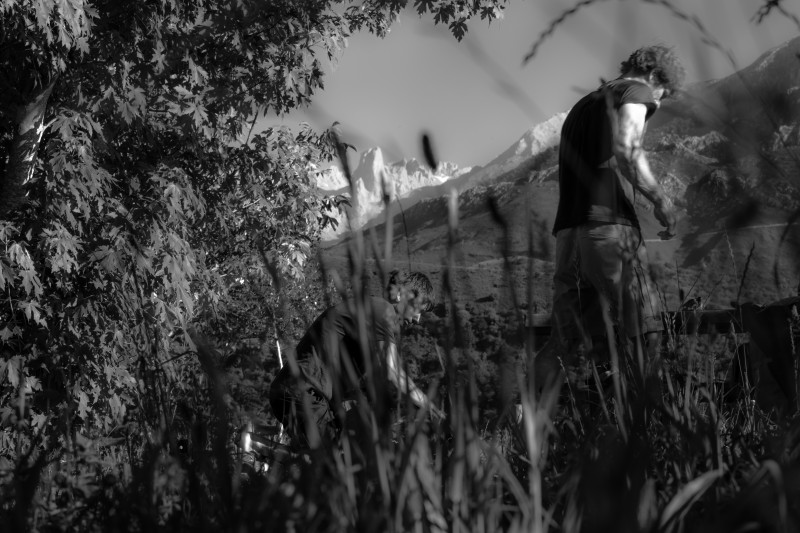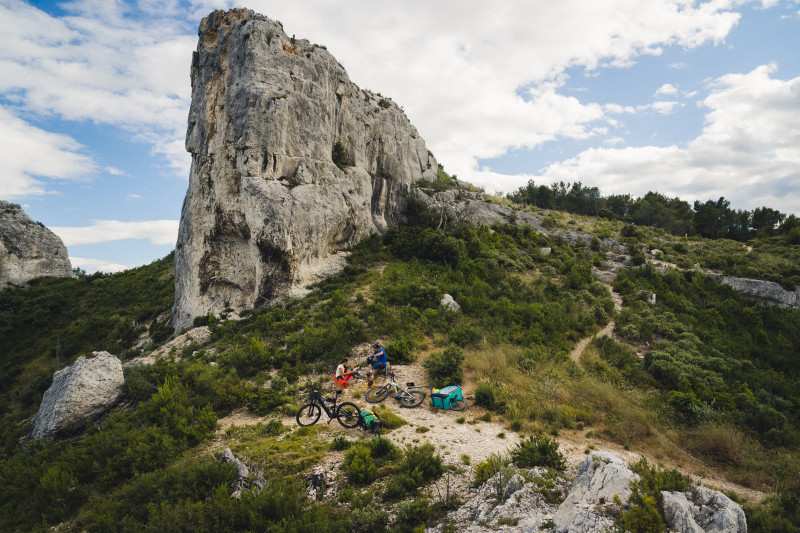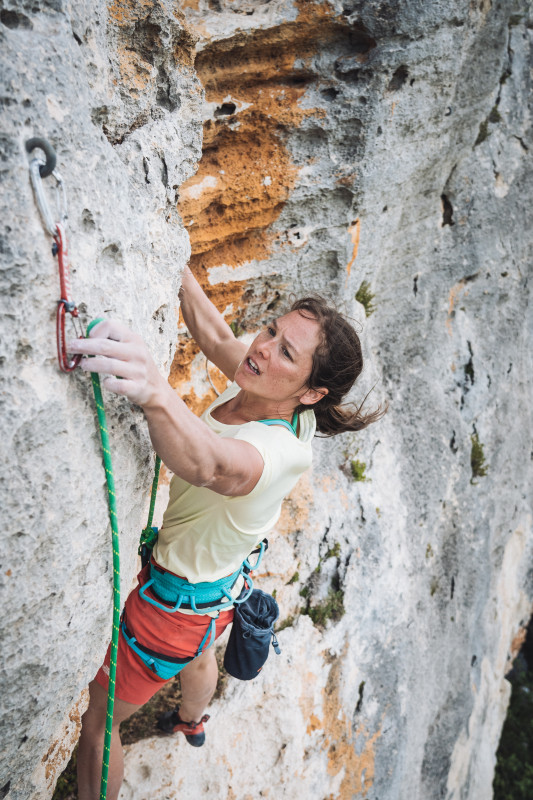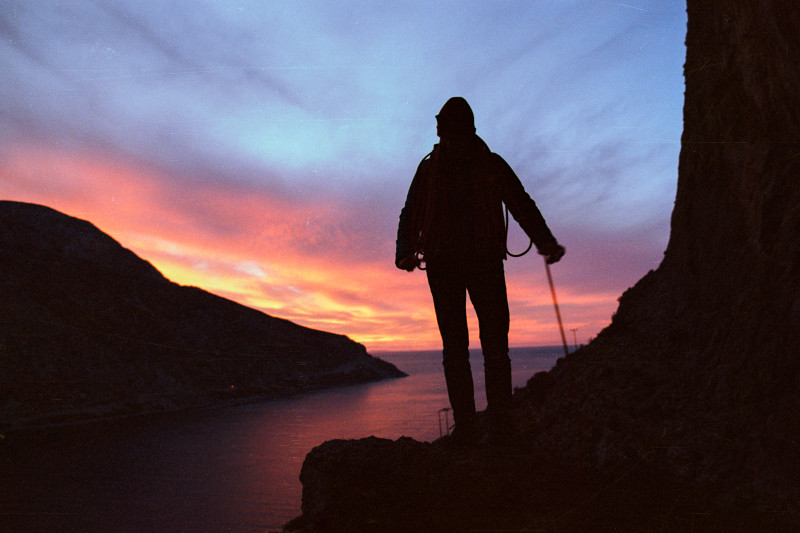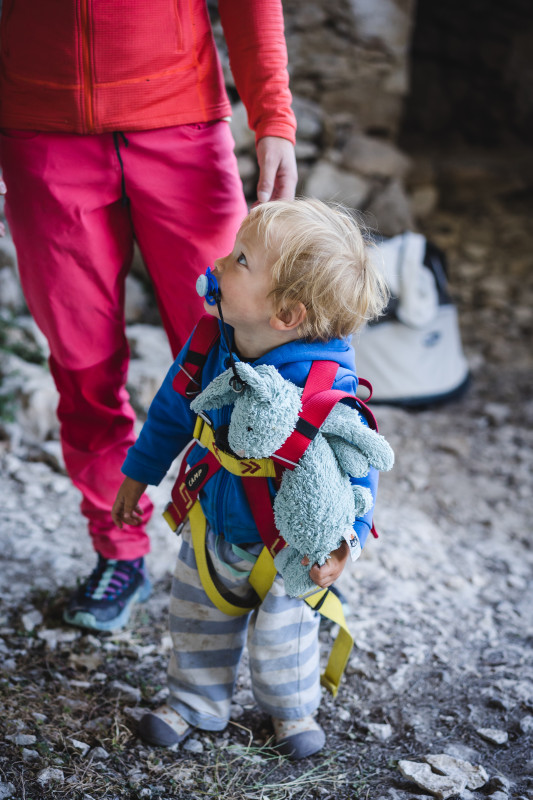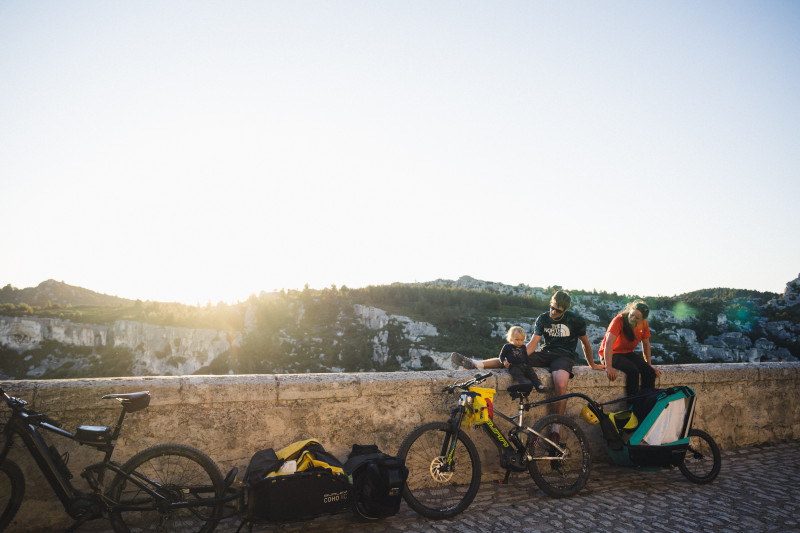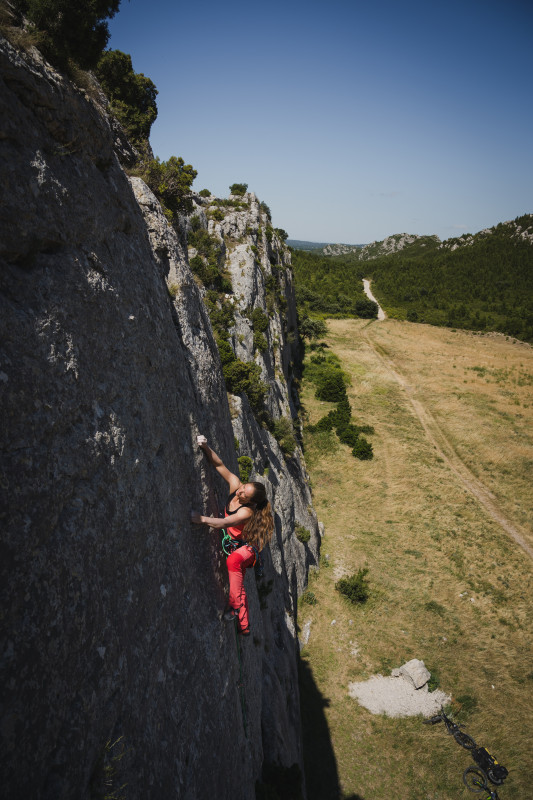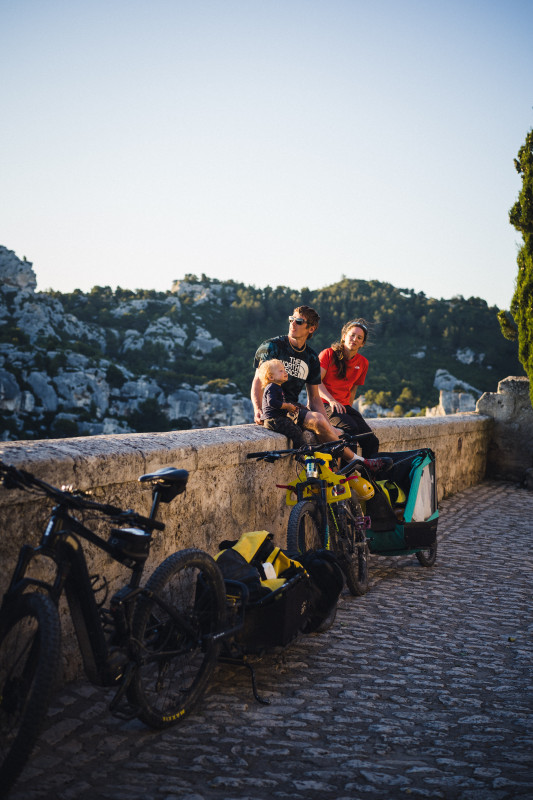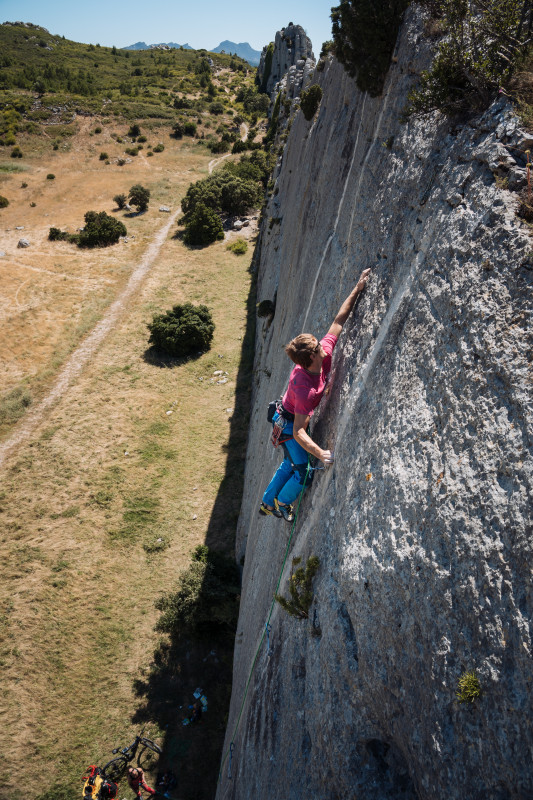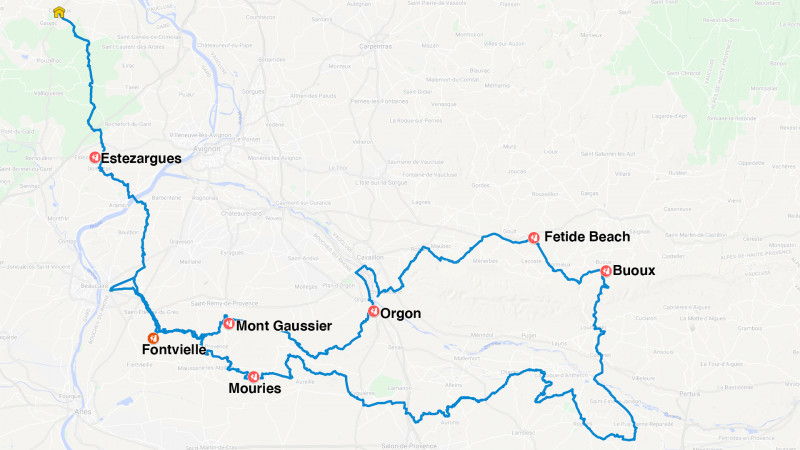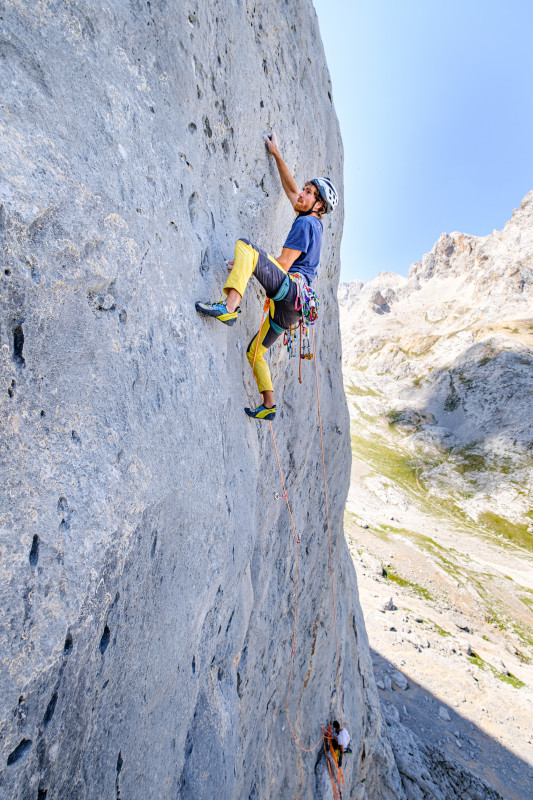ORBAYU
A Personal Challenge Inspired by Mentors
9.0 minute read
Picu Urreillu, or Naranjo de Bulness in Spanish, is the Pico's de Europa's pride peak, a mountain range in northern Spain. This 500m tall rock formation's steep orange west face is home to the mythical line Orbayu (8c), a variation from the old aid-route Mediterráneo (6a+/A3). The two routes join at pitch five, which is the crux pitch for both lines.
I had heard many tales about this route, mainly of Iker and Eneko Pou, the first ascensionists of Orbayu in 2009. The brothers collectively referred to as 'Hermanos Pou' are longtime friends and mentors for me as a professional climber. After meeting them in 2013 at an event, we've shared some fantastic times on several expeditions; they have contagious energy motivating and encouraging people to try hard and push their limits as they did with me. In part, this inspired me over the past year to set out to climb some of the world's most mythical routes. Making a list, Orbayu quickly entered the top five. This list is intimidating, of course, who am I to set these world-famous test pieces as a goal? But when I first told the Pou brothers I wanted to try Orbayu this summer, their enthusiasm burst through my cellphone. Their confidence in my capability was an extra boost to go for it. I couldn't have wished for better support.
It's not only the difficulty of the climb that makes this line so mythical, though; it's the climbing protection that adds to the adventure. The extra challenge of placing traditional protection while climbing hard drew me in. Even after the crux pitch where you've already climbed the 'big numbers' the route still requires a lot of attention as you navigate a sea of limestone following the original aid route. I had heard stories of people getting lost here, big unprotectable runouts, and anchors that have been taken away by ghosts – I smelled an adventure.
Hiking up to the base of the wall in early July 2020, the real Orbayu met us. Not the climb but the humid, rainy-like, fog which the word Orbayu is used locally to describe. Our visibility was little more than 8 meters for the first pitch, which lived up to its notoriety of exposed climbing on loose and exciting rock. All of this combined to help me get into flow and jump-started my mood for the adventurous climbing ahead.
Cautiously making progress, my climbing partners, Ignacio Mulero, and David Lopez Campe (who was along to film), and I slowly made it to the crux pitch, fixing static ropes up to here. At the base of this pitch, I could see a line of 'burriles', fixed pitons, copperheads, and nuts in front of me and asked myself how it would be to climb those hard moves on this unknown, possibly sketchy, fixed protection. Moving from one loose piton to the next fixed nut, hanging in every piece of gear, both my excitement and trepidation for the climbing ahead grew.
At the start, my progress felt slow, falling over 20 times while trying the crux moves. I knew I had to try several times though to get the feeling right but, Iker and Eneko had warned me about how brutal the rock is, "It's really really sharp, you will have to rest a lot and eat good Asturian food down in the village" they had exclaimed. Despite these wise words and the echos of advice from Campe and Mulero to take it easy on my skin, I was motivated and stubborn– climbing six days out of the seven in our first week, four of these days explicitly working the crux. I only had two tries a day because of my skin, but even with three to four split fingertips covered with tape, the village food still had to wait.
In the evenings at Refugio Urreillu, we would have a beer and chat about the moves, the protection, progress, and frustrations. All of which I would record in my Orbayu journal until finally, it was time to take a proper rest. I needed to let my body recover, treat my skin, and we all needed to enjoy filling our bellies with Asturian specialties in the town of Arenas de Cabrales. This is where we met up with Iker and Eneko.
It is always great to see the Basque duo again, full of energy and jokes! As I talked about my progress and sending strategy with the brothers, they made fun of my impatient behavior and helped me realize, once again, I would have to try fewer days but with more skin. I followed their advice, and after three rest days, we hiked up again. During the approach, I visualized the moves of the crux pitch, over-and-over again. I could feel the holds with each fingertip, imagining how easy it would be; I felt strong and confident without tape. Despite my confidence to give Orbayu a ground-up try, we jumared up to the crux to retrieve our climbing shoes and ropes that we had left at the anchor. That day I made one warm-up try and then could free the pitch with only one rest on the rope. I was smart, though, and called it a day early asking Mulero if he would be up for a send try the next day. No skin to waste!
Nightmares about the crux moves in the lower pitches kept me awake; I was nervous. But I managed to calm myself down in the morning; after all, it's only the first real ground-up try. Nonetheless, I was nervous. By 8:30 am, I was cruising the first pitch, and with cold and windy conditions replacing the 'Orbayu' (fog) climbing felt great. Campe and Mulero left me in my bubble of concentration and encouraged me to believe in my strength. Arriving fresh at the crux, I felt better than ever. I was warmed up, and my skin was still good from climbing with four taped fingers until this point. Like always, I was impatient, and after only half an hour, I was ready to give it a try.
I climbed nimble like a cat, and could feel every hold better than ever with only one split fingertip tapped. At the rest, all kinds of thoughts went through my head, I even imagined celebrating this ascent with cider and cachopo. I flowed through the fourteen crux moves and took another uncomfortable rest. Now the last endurance section would come, brutal biceps moves on two-finger pockets. Everything went smoothly; I just had to keep my head cool. I placed the last 0.75 Zero Friend and made the final section to the anchor where Campe received me. It was the best top out ever; I could share it straight away with someone who had seen the whole process from frustration and focus into joy. Some say they would feel uncomfortable having every moment filmed on a project– I just saw Campe as part of the team, the process, and the goal. After finishing one more difficult pitch, we left our static ropes behind and continued in a party of three to the summit. The sea of limestone and adventure was the best icing on the cake I could get.
It was a fantastic feeling standing on the summit of this mythical peak for the first time, having climbed one of Europe's hardest multi-pitch routes. I was surprised it all went so quickly in the end. But I knew it wouldn't have been possible without the support of Campe, Mulero, Iker and Eneko, and the local climbing community. Refugio Urreillu is a central part to all of this. They know the routes and history of every climb, and even through the difficult adjustments of COVID-19, the staff brings everyone together for beers and stories. The Refugio creates a community of enthusiastic and supportive climbers that feel like a direct link to the Pou brother's enthusiasm. It is a community that makes you realize how important our climbing community and mentors are to give us confidence to face even the most challenging routes.
Stage 3- Mont Gaussier
Steep, short, chipped again, but great routes! Being a parent and a climber usually means that you will be happy no matter what you climb on, as getting to put our hands on the rock is already a treat!
Here we chose a secret spot next to the lake. Although not on the topo, it was really convenient with the baby. Going local definitely has its advantages as we knew most of the secret spots, or can ask and figure out what would be ok for a one-year-old!
Stage 4- Orgon
We drove along the Alpilles, and even if my love remains with climbing, I can see how biking is also an incredible way to be out! The Alpilles that we always overlooked from a car are a beautiful chain of little mountains!
Orgon is such a big crag that it has a full topo for itself. We could have stayed there for two months before knowing it all. We settled for the little spot of "la Bergerie" which we didn't yet know. Chipped routes, as always in Orgon, but interesting in the 8th grade! James did an 8c+, and I an 8b. La Bergerie is a perfect place for a baby as he could play all day at the foot of the crag.
Stage 5- Fetid Beach
Fetid beach is an unknown spot, even from the locals. Even on the Grimper online, there is only a location, but the grades are often marked on the route names. The place is incredibly beautiful, but the routes are in a very demanding style with mono and two-finger pockets. Maybe the Frankenjura isn't that different, but we found it really painful.
Written by Siebe Vanhee
Photo by David Lopez Campe
Stage 6- Buoux
We stayed four days at the "Auberge des Seguins," which is a perfect location to go to the crags on foot. They even let us take our dinners outside by the bedroom while the baby was already in Bed. Buoux doesn't need any publicity. It is a unique, incredible crag, and there is a reason for its Fame. Buoux is a Must visit". No matter what your level is, you will find a gem to climb!
Stage 7- Mouries
Mouries is a long way from Buoux, and we had initially planned some extra stops. But the heatwave had begun, and the other planned spots were not as exciting. So, instead of climbing stops, we biked for two days, visited an abandoned troglodyte village (les grottes de cales), and loved it!
Mouries again is an old lady, and if you can get away from requiring extremely tough grades and enjoy the technical climbing, you will love it. Mouries is a climbing lesson in itself.
Stage 8- Fontvieille secret crag
I can't tell you the secret crags, as they are secret because they aren't technically allowed. To find them you have to ask as you meet climbers on your previous days and if you are lucky they may tell you the secrets! France is full of them, and sometimes these are the best crags!
We arrived back home after 25 days of traveling and climbing. It wasn't always restful, but then living with a baby is never restful! Every day brought us load of discoveries, from a wild tortoise to incredible pains au chocolates, to meeting an old friend. Baby Arthur loved it. The minute we stepped back in the house, he was pointing again at the window, asking, "where next?" For James and me, we finish this adventure delighted to have realized that we still have so much left to explore, and it is all less than 100km from our home. This bike and climb trip is only the first!
SHARE ON

